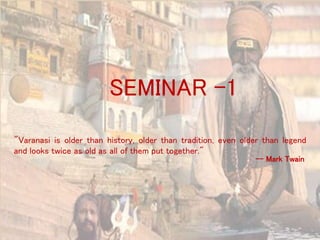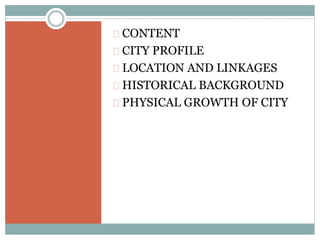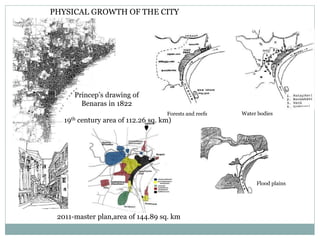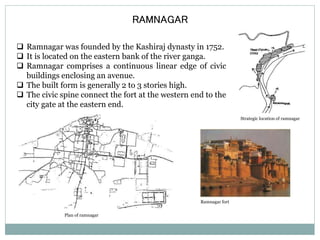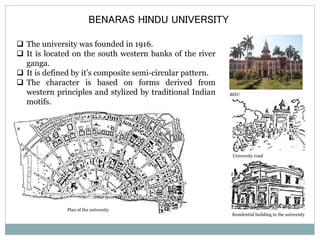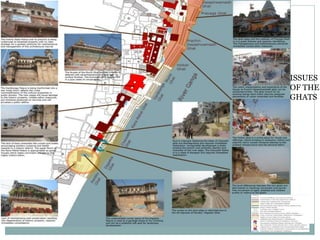Varanasi is an ancient city located on the banks of the Ganges River in Uttar Pradesh. It has been continuously inhabited for over 2,000 years and is considered one of the holiest places in Hinduism. The document describes Varanasi's history and growth, including its traditional core established in the 2nd century BC, and later developments like the colonial settlement in the 18th century and Benaras Hindu University in 1916. It provides statistical data on Varanasi's population, literacy rates, and administrative divisions. Key features discussed include the 84 ghats along the Ganges used for religious rituals and bathing, and the city's radial and orthogonal street networks within the traditional core.
